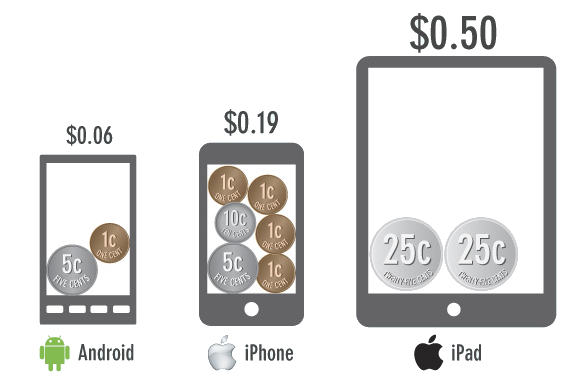The digest of news from the world of mobile development for the last week №22 (July 22 - 28, 2013)
All this week, the iOS Developer Center remained closed, Google introduced and released Android 4.3, Unity 4.2 began supporting Windows Phone 8, Windows 8 and Blackberry 10, and Flurry conducted an amusing study of the prices of applications. All this is in our weekly digest.

Google just introduced Android 4.3. The image is already available for Nexus 4 and Samsung Galaxy Nexus. The main features of the new version are the ability to work with several accounts of different degrees of limitations on one device, support for Bluetooth Smart and OGL ES 3.0.
The developers were sent a message in which the company said that on Thursday it had discovered penetration into the Dev Center and that hackers could get access to the names, physical and postal addresses of the developers. The rest of the information, including credit card numbers, is encrypted and remained intact, Apple writes. Now the Center has already returned to service .
The first messages about the unavailability of data, which, among other things, influenced the ratings of applications, appeared on the Windows Phone Dev Center in early June.
Samsung has become a giant capable of competing with the largest companies on the market, and now, following the example of its competitors, announced its first developer conference to be held in San Francisco from October 27 to October 29.
')
Android
iOS
Windows phone
Tizen
Development
Marketing, Recalam and Monetization
Devices

The best
 | Google Introduces Android 4.3 |
 | iOS Developer Center hacked |
 | Developers under Windows Phone have been unable to access download data for a month now. |
 | Samsung holds its developer conference |
')
Android
- Overview of the @to Music mobile app for the Android platform
The third review of a series of materials containing practical recommendations for improving the design, architecture and ergonomics of the interface of applications for Android. - BOINC: Androids are attacking AIDS
- In August, it will be possible to purchase and rent textbooks on Google Play
- We write our Orm for Android with Canas and Senorites ( Part 1 and Part 2 )
- Google Play Games
iOS
- 10% cashback on Apple payments with Payoneer
- How to get to the top Apple App Store
Another review of the Distimo report with an emphasis on Russian realities. - Dynamic string search in iOS
- Apple has become the largest seller of Electronic Arts
Windows phone
Tizen
Development
- Tiny Thief is a cool mobile game made using Flash + Autodesk Scaleform Mobile SDK
There was a tool that, apparently, allows you to port Flash to mobile platforms in a convenient way and gives you good performance. - Google launches Google Cast SDK for iOS, Android and Chrome
- Project Anarchy - free game engine from Havok
Now this engine, as well as a number of other important Havok products in a single development environment, is available to absolutely all game enthusiasts for free. - Site Optimization for tablets
- Pentotype allows you to quickly create interactive prototypes of applications.
- SwapMob - auction of goods for free games
- Shazam: a good application is never complete
We continue a series of articles based on interviews with developers of well-known applications. After the material on Room 8, we decided to move further west - to the UK, where the creators of one of the most popular applications are based on the data from the AppStore - Shazam. - Unity now works with Windows Phone 8, Windows 8 and Blackberry 10
- White Nights 2013: More or less? (video)
- GameDev, Indie, Corona SDK, GameJam 48h, DevConf, Go, Laser Flow, ZipQuest, $ 5 Prize
Marketing, Recalam and Monetization
- MoPub allows developers to track profits in all ad networks simultaneously.
- Opera: US share in the mobile advertising market has dropped below 50%
- Price history: why most apps are free
Flurry investigated this revealed preference for free content over content without ads, analyzing pricing information for more than 350,000 applications using Flurry Analytics over a period of four years. - White Nights 2013: Big Fish on monetization of F2P games (video)
Devices
Source: https://habr.com/ru/post/188134/
All Articles